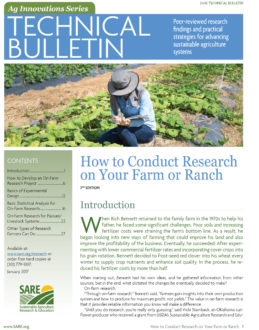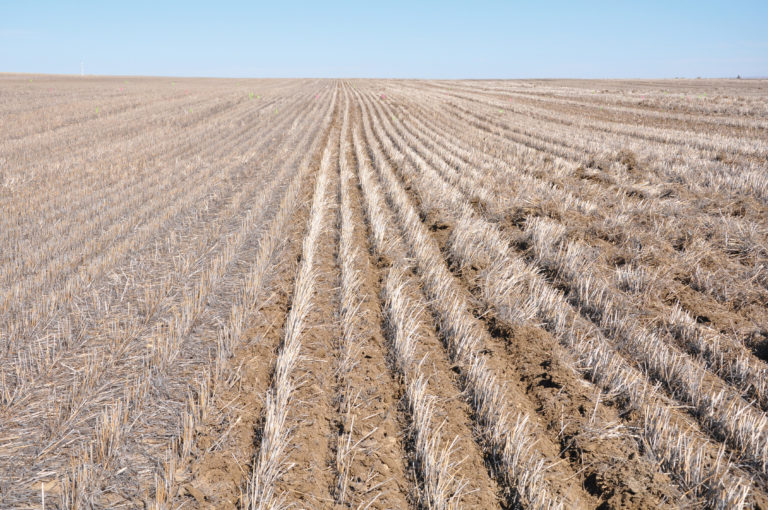On-farm research can help you solve problems on your farm, assess new practices and determine the effects of changing your production system in some way. The methods used in on-farm research will give you confidence in the results and answers you get. But on-farm research also has a number of drawbacks. Some of the major challenges include:
- Time and effort. It takes a lot work to design and implement an on-farm research project. For best results, most research projects should take place over at least two growing seasons. In order to make your project a success, you will need to take this additional time and effort into account as you develop your work plans for the coming season.
- Coordination. Similarly, on-farm research must be coordinated with your regular farming activities. Key areas for coordination include field and plot layout and separation, planting, managing research plots correctly, and harvest and data collection.
- Costs. On-farm research may involve extra expenses for planting and managing field plots, collecting data, and any specialized tests that you run on soil or plant samples.
- Knowledge and skills. On-farm research also requires some expertise in planning and design, managing the field experiment, and collecting and analyzing data. You will need to either develop these skills yourself or seek others who can help in these areas. Technical advisors are particularly important for experimental design and statistical analysis.
- Managing expectations. With on-farm research, you must strive to be objective and to accept the results that emerge from the project, even if they are not what you expected. The hope is that you will find the answers you are looking for, and with the proper research methods, that will most often be the case. Even a “failed” experiment usually provides useful information.
Given the challenges outlined above, where can you go for help? Your state land grant university and Cooperative Extension service is a good place to start. Try contacting your local county agent, county faculty or farm advisor and let them know what you are thinking about. First, they can probably tell if your question or problem has already been addressed: The information you need may already be available. Second, if you decide to go forward with your project, they may have resources and information that will help you narrow the focus of your project and design a project that matches your needs and capabilities. You may also want to contact your state SARE coordinator, who can connect you with other farmers or researchers who might be able to assist you (State Programs). You can also search the SARE project reports database to read about other types of on-farm research projects that might have relevance to your own. Lastly, check out the many resources listed at the end of this publication, which provide additional information about on-farm research.
Apply for a SARE Grant to Conduct On-Farm Research
Over the years, dairy farmer Tom Trantham has participated in three kinds of SARE grants involving on-farm research and demonstration, an experience that helped him successfully transition to a pasture-based system (see his profile). Through its nationwide competitive grants program, SARE sponsors research and education projects that advance—to the whole of American agriculture— innovations that improve profitability, stewardship and quality of life. Between 1992 and 2016, SARE funded about 2,600 small grants for farmers and ranchers to conduct on-farm research.
To learn more, visit the Grants page and follow the link for your region of the country. Each region has its own guidelines for how to apply, what kinds of activities can be proposed, funding amounts and collaborators—so read the Calls for Proposals and supplemental information carefully. Proposal workshops and other project development resources are also available, including a recording of the webinar, Successful Research Design and Methodology for Grant Proposals.

